Even those accustomed to dramatic developments in the Middle East and South Asia were caught off guard by the announcement last week by Saudi Arabia and Pakistan of a new “Strategic Mutual Defense Agreement.” The pact, formalized with considerable pageantry in Riyadh on September 17 during Prime Minister Shehbaz Sharif’s visit, went far beyond the platitudes that typically characterize cooperative security announcements. It included a sweeping commitment to mutual defense, and although the text was not released, some officials on both sides—including Pakistan’s own minister of defense—intimated that the deal involved the provision of extended nuclear deterrence.
The pact clearly formalizes and deepens decades of Saudi-Pakistani security and defense cooperation, building on a landmark 1982 protocol agreement. Pakistan, home to one of the world’s largest standing armies, has deployed sizable military forces to the kingdom since the 1970s—at times exceeding 10,000 troops. Pakistani forces helped to defend Saudi territory and holy sites during the 1990-91 Gulf War, and Pakistan has reportedly provided an ongoing rotation of forces in training and advisory roles, estimated today at over 1,500 personnel. Riyadh has reciprocated by periodically extending financial lifelines to Islamabad, including oil and loans during periods of economic stress.
The new agreement’s implications are consequential, given each of the two parties’ own sets of allies and long-standing adversaries. Even at this early stage, the key questions are clear: Where did this deal arise from, and why now? What might it mean for Saudi-Pakistani cooperation in the conventional realm—and how, if at all, will it intersect with persistent debates about nuclear assurances? And what should we watch for over the horizon as the accord is translated into practice?
A timely diversification
It is tempting to read this new agreement as a direct response to very recent events, particularly the Israeli strike on the Hamas leadership in Qatar. This attack further stoked fears in Riyadh about Israel’s assertive use of force and the United States’ apparent unwillingness to restrain Israel, even when it acts against a key U.S. regional security partner and a “major non-NATO ally.” However, while the strike in Qatar may have been a catalyst for finalizing the deal, the Saudi-Pakistan agreement appears to have been years in the making, and is better understood as an effort by both countries to diversify their defense partnerships and hedge against the evolving risks that they face in the region.
For Saudi Arabia, the impulse for this deal was grounded both in its growing concerns about Israel and its long-standing rivalry with Iran. Tehran’s regional influence has undoubtedly waned over the last year as a result of sustained Israeli and U.S. military pressure, and the dramatic collapse of Bashar al-Assad’s regime in Syria. But Riyadh likely worries that the Trump administration seems to have abruptly lost interest in the Houthi threat, seems to lack a plan following this summer’s 12-day war for dealing with Iran’s nuclear ambitions, and may not be overly invested in countering other vectors of Iranian support in the region.
More broadly, the Saudis are acutely aware of the increasingly capricious nature of U.S. policymaking toward the Middle East; if they have thus far escaped the kind of coercion that President Donald Trump has eagerly directed at other close U.S. security and economic partners, it is only because they have more economic largesse to offer. But as Japan has recently learned, this also makes them a target for heavy-handed dealmaking by Washington.
For Pakistan, the logic is quite different but equally compelling. Ever since the Taliban captured Kabul in the summer of 2021, the Pakistani military leadership has been anxious—for good reason—about the prospect of becoming overly reliant on a single patron: China. The United States’ suspension of military sales and reduction of economic assistance to Pakistan, combined with India’s successful efforts over the last decade to cultivate deeper economic ties with the Gulf Cooperation Council (GCC) countries, left Islamabad isolated. The Pakistani military probably has reason to believe that this pact might institutionalize more sustained and diversified financial support from Saudi Arabia; dampen Riyadh’s engagement with New Delhi on defense, technology, and infrastructure investment; create new opportunities for leverage over India in a bilateral crisis; and demonstrate to its own people and to other countries in the region that it has built a resilient set of partners and is not unduly reliant on China for economic and security assistance.
But what does it mean?
The announcement raised but did not answer an important question: beyond the signaling and diplomatic maneuvering, what does this deal actually mean for Saudi-Pakistan security cooperation, and how will it be operationalized?
The reality is that we do not yet know. But part of the significance of a pact of this kind is that it creates a structure and an intelligible public logic that can be expanded and systematized by both parties over time. The presence of a mutual defense commitment also creates incentives for both countries to invest in more robust information-sharing, secure communications, and analytic exchanges. In that sense, the structure could prove to be consequential even if there is not yet any “fine print” specifying new cooperative activities.
There is, first of all, considerable scope for cooperation in the conventional defense domain. Pakistan has a highly capable military; as the dominant institution in the country, and one that controls its own budget, it is inclined to generate overcapacity in personnel and capabilities. It thus benefits politically and financially from stationing forces in Saudi Arabia and from advising the Saudi military. These cooperative arrangements might well expand over time through more frequent combined exercises, access arrangements, and embedded advisory roles, especially as Riyadh is in the midst of a long-term effort to build human capital in the defense domain and move away from its reputation as merely a buyer of exquisitely expensive foreign defense materiel.
There may also be a profitable defense industrial angle, though this would likely develop gradually. Saudi Arabia has stated ambitions to localize a greater share of its defense procurement under Vision 2030, which requires partners willing to share technology. Pakistan has coproduced defense systems with China and, as we observed in the India-Pakistan crisis in May 2025, can serve as an operational testbed for sophisticated Chinese equipment.
It is not clear that Riyadh is currently interested in reviving its earlier efforts to procure Chinese arms, particularly in light of its ongoing and protracted negotiations with Washington over a mutual defense agreement. It might, however, look to invest as a financier or a buyer in jointly produced Pakistan-China platforms, or engage directly with the Pakistani industrial base that is developing niche capabilities in several advanced technology areas. To be sure, adding Chinese or Pakistani equipment could complicate Saudi Arabia’s efforts to build the kind of integrated, networked architecture that future warfare demands, but deeper diversification may be judged a tolerable cost if it mitigates the risk of over-reliance on the United States, or if U.S.-Saudi negotiations on a defense agreement stall.
This agreement might also pave the way for Pakistani forces’ more direct involvement in Saudi regional campaigns. A brief history here is instructive: in 2015, when Riyadh sought Pakistani troops for operations in Yemen, Pakistani leaders demurred and engineered a parliamentary resolution to remain neutral. A demurral of that kind would be harder to defend in the wake of a mutual defense pact. Indeed, Pakistan’s military leaders might worry that they would put at risk other dimensions of the bilateral security relationship—or possible Saudi support in an India-Pakistan crisis—if they told their counterparts in Riyadh that a regional conflict such as the one in Yemen unfortunately did not meet the threshold for “mutual defense” assistance.
The nuclear question
The nuclear implications of this deal are, unsurprisingly, much murkier. Pakistan’s defense minister (who has, unfortunately, proven to be an unreliable narrator of his own government’s intentions) and other unnamed officials in both countries asserted that the mutual defense commitment extends to Pakistan’s strategic assets. But that characterization was quickly walked back by Pakistani commentators, who cast the pact principally as a “show of solidarity” and framed the nuclear dimension as, at most, an exercise in signaling.
We should indeed be careful not to extrapolate operational nuclear cooperation from political statements, particularly as rumors of a secret Saudi-Pakistani nuclear deal have been persistent but unconfirmed for decades. Nevertheless, as Bruce Riedel has eloquently argued, there is in fact a coherent strategic logic to the idea that Pakistan would offer an extended nuclear deterrent to Saudi Arabia, even if the arrangement is contingent. Riyadh has long sought extended deterrence guarantees from Washington, and until and unless such an agreement is consummated, it has good reason to look to Pakistan for some form of nuclear assurance, especially as a hedge against a nuclear Iran. At the same time, Saudi Arabia is pursuing civil nuclear capabilities and will not want to raise non-proliferation concerns that could jeopardize a possible agreement with the United States.
Regardless of what bilateral nuclear understanding is or is not in place, the recent bilateral pact could have strategic implications in two ways. First, ambiguity about the security arrangement’s nuclear dimension generates its own kind of deterrence that could be modestly useful for both parties as they eye current and future adversaries. Second, the agreement could help to foster the kind of institutionalized military and intelligence-sharing structures that make nuclear cooperation more likely over the long run, even if that cooperation remains deliberately opaque.
These nuclear implications are significant, though even an overt nuclear umbrella would alter but not transform the region’s conflict dynamics. Pakistan and Saudi Arabia undoubtedly recognize what recent history underscores: nuclear weapons only deter certain kinds of aggression in certain circumstances. The record of India-Pakistan crises across the sub-conventional and conventional spectrum suggests that nuclear weapons would not deter many of the acute security risks that likely preoccupy Saudi military planners.
Risks and regional ripple effects
This new deal is valuable for both Saudi Arabia and Pakistan, but it is not without risk.
Another India-Pakistan crisis, especially of the kind that has arisen with troubling regularity over the last two decades, would quickly test the pact’s political elasticity. Riyadh’s instinct would be to stay passive, preserving hard-won trade equities with India while honoring its security obligations to Pakistan. That balance will now be harder to sustain, though Saudi Arabia may take some comfort from the fact that Pakistan has not publicly demanded support from its other principal ally, China, in recent Indo-Pakistani crises. And although an Abraham Accords-style rapprochement with Israel now feels distant, Saudi leaders might find over a longer horizon that deepened defense and possibly nuclear links with Pakistan could complicate their room for maneuver for a future normalization.
For Pakistan, the most immediate operational risk is entanglement. Intensified Houthi activity in the Red Sea and beyond could generate renewed Saudi requests for air defense, maritime security, and defense of critical infrastructure on Saudi soil. Islamabad’s appetite for those missions will be limited by domestic politics, force readiness, and the need to keep capabilities focused on India. Pakistani leaders also need to manage expectations about Saudi largesse; Chinese investment under the China-Pakistan Economic Corridor has noticeably slowed, but Pakistan’s partners in the Gulf, including in Saudi Arabia, have been cautious about financing even the high-profile minerals sector in Pakistan, due in part to economic fundamentals and in part to local security concerns. Moreover, even the perception of a Saudi financial backstop could dampen Pakistan’s incentives to engage in long-overdue structural economic reforms.
Other countries in the region will no doubt be watching carefully to see what kind of practical cooperation emerges from the Saudi-Pakistan accord. India has perhaps the most to lose, as the agreement complicates New Delhi’s notably successful efforts over the last decade to cultivate deeper energy, trade, and diaspora links with Gulf states, while at the same time forging a robust technology and defense industrial partnership with Israel. A visible Saudi tilt toward Pakistan, even if mostly symbolic, sharpens contradictions in India’s “have it all” approach to the region. Furthermore, such a tilt might complicate the U.S.-supported India-Middle East-Europe Economic Corridor (IMEC), which is designed to connect India and Israel via Saudi Arabia and other Gulf partners. India would grow particularly anxious if the Saudi-Pakistan defense agreement were expanded over time to include other Gulf states, though such an arrangement would probably dilute the agreement’s value and exclude even the intimation of extended deterrence.
Ultimately, this deal is important not only for what it portends for the Saudi-Pakistan security relationship but also for what it says about the changing mood in the region. Beyond the predictable and long-standing anxieties that leaders in the Middle East and South Asia hold about U.S. regional policy, there is a sense they are discomfited by deeper trends—the questionable reliability of U.S. security commitments, the return of a more volatile global trading order, and the confusing signals from Washington about whether it will sustain or abandon its competitive approach to China. In this light, countries across the region may rightly view the Saudi-Pakistan pact as a hedge against over-dependence on great powers, and they may well seek out their own strategies to do the same.
The Brookings Institution is committed to quality, independence, and impact.
We are supported by a diverse array of funders. In line with our values and policies, each Brookings publication represents the sole views of its author(s).

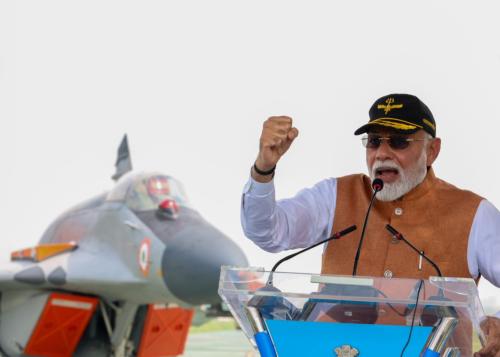
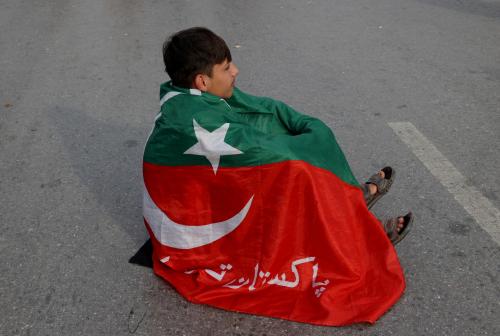
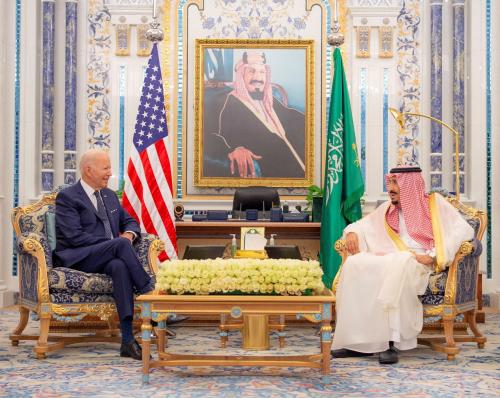
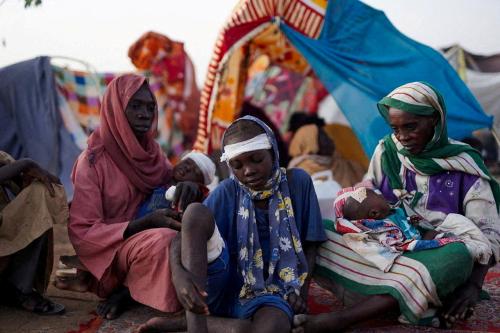
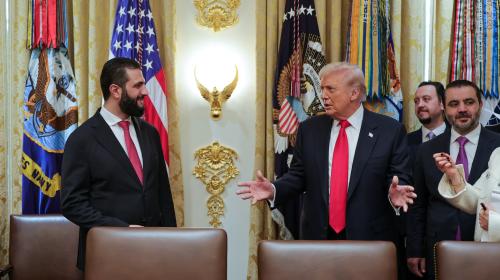
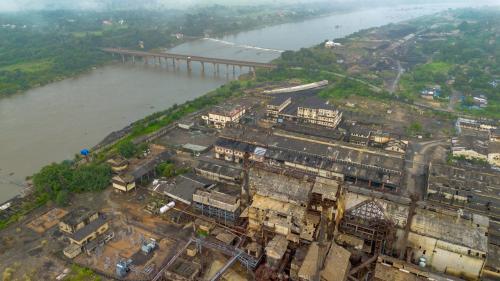
Commentary
The signal and substance of the new Saudi-Pakistan defense pact
September 24, 2025